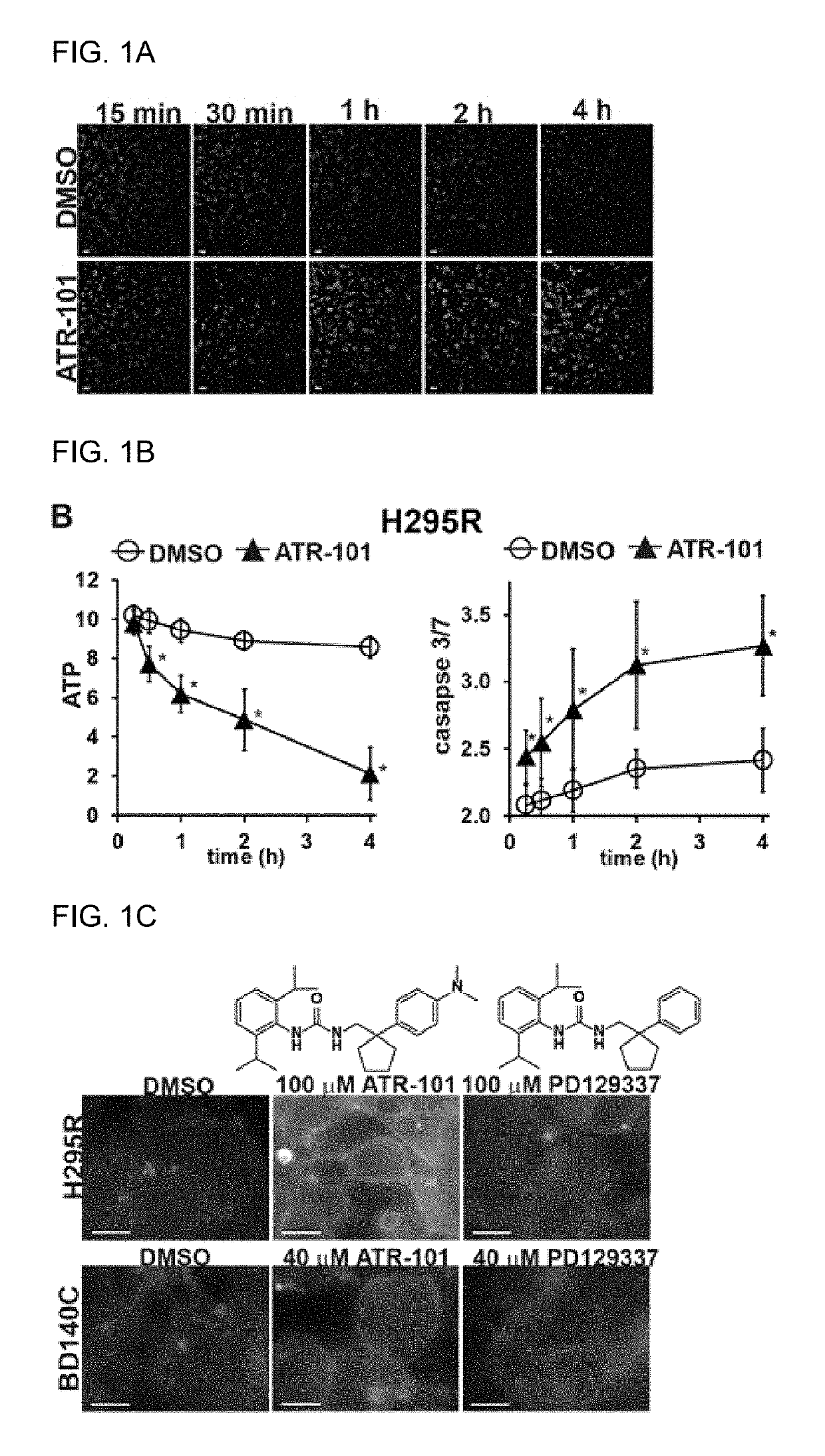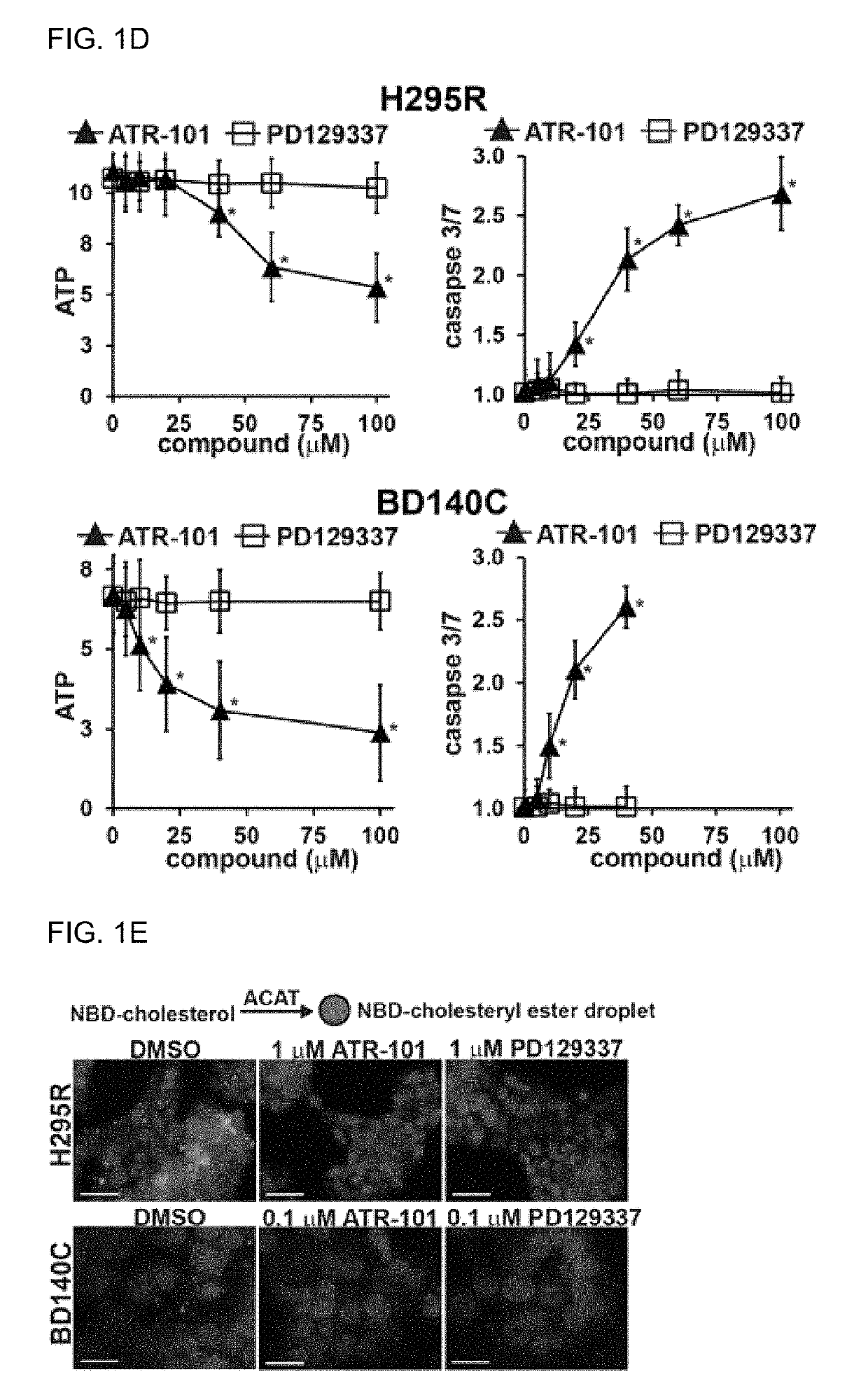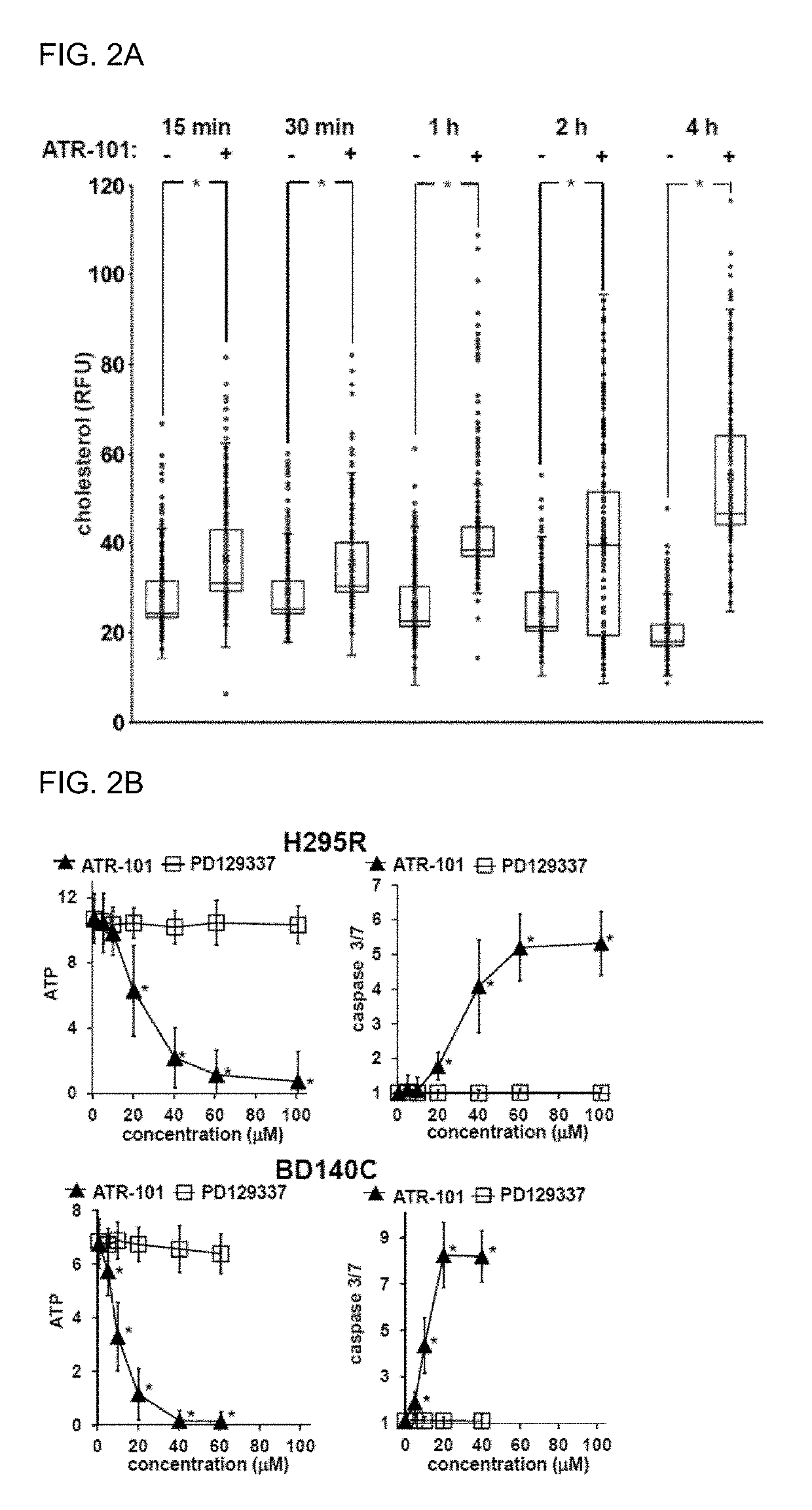Compositions and methods for treating conditions related to adrenocortical activity and/or excessive steroid production
a technology of adrenocortical activity and steroid production, applied in the direction of drug compositions, amide active ingredients, nitrile/isonitrile active ingredients, etc., can solve the problems of difficult histological diagnosis of ac, no reasonable or specific way to distinguish ac from the much more common benign adenomas, and the activity of the adrenal gland interferes with the normal functioning of the adrenal gland. , to achieve the effect of suppressing
- Summary
- Abstract
- Description
- Claims
- Application Information
AI Technical Summary
Benefits of technology
Problems solved by technology
Method used
Image
Examples
example i
[0197]This example provides the materials and methods utilized in Examples II-XI.
Cell Culture Conditions
[0198]H295R and BD140C cells were cultured in DMEM without glucose (Gibco) supplemented with 10 mM galactose, 5% FBS, 0.1 mg / ml penicillin-streptomycin, 2 mM L-glutamine, 5 mM sodium HEPES, 1 mM sodium pyruvate, and the compounds indicated in each experiment. To examine the effects of serum cholesterol, the medium of cells that were cultured under standard conditions was replaced with serum-free medium containing the indicated compounds. The cells were cultured in serum-free medium for the indicated time, and were analyzed using the same protocols that were used for cells that were cultured in serum-containing medium.
Visualization of Cholesterol Levels and of Cholesterol Esterification
[0199]The cells were seeded in 96-well ibiTreat μ-Plates and allowed to adhere for 48 h prior to the start of each experiment. Cholesterol was detected in fixed cells by incubating with 100 μg / ml fil...
example ii
[0238]This example demonstrates the kinetics and specificity of cholesterol accumulation, ATP depletion and caspase activation in response to ATR-101 addition to ACC-derived cell lines.
[0239]Since ATR-101 causes cholesterol accumulation and ATP depletion in the adrenal glands of guinea pigs as a harbinger of adrenalytic activity, experiments were conducted that examined the effects of ATR-101 on cholesterol and ATP levels as well as on caspase 3 / 7 activities in ACC-derived cells. Cholesterol accumulation was detected 15 minutes after ATR-101 addition to H295R cells (FIGS. 1A, 2A). ATP depletion and caspase activation were detected 30 and 15 minutes after ATR-101 addition, respectively (FIG. 1B). The rapid accumulation of cholesterol, ATP depletion, and caspase activation upon ATR-101 addition to cells indicate that these effects of ATR-101 were causes rather than consequences of ATR-101 cytotoxicity.
[0240]To investigate the specificity of the effect of ATR-101 on cholesterol accumul...
example iii
[0243]This example demonstrates the suppression of ATR-101 cytotoxicity by compouds that prevent cholesterol accumulation in cells that are cultured with ATR-101.
[0244]To determine if cholesterol accumulation was required for ATR101 cytotoxicity, experiments were conducted that evaluated the effects of cholesterol sequestration by methyl-β-cyclodextrin (MβCD) on ATP depletion and caspase activation by ATR-101. Addition of MβCD together with ATR-101 prevented cholesterol accumulation in H295R cells (FIGS. 3A, 4A). MβCD also prevented ATP depletion and caspase activation by ATR-101 both at 4 h and 24 h after addition to H295R cells (FIGS. 3B, 4B). Cells that were cultured with ATR-101 alone were small and rounded, whereas cells that were cultured with ATR-101 in the presence of MβCD remained flat and adherent for at least 30 h (FIG. 4E). MβCD alone had little effect on the ATP level, the caspase 3 / 7 activity, or the morphology of H295R cells (FIGS. 3B, 4B, 4E). MβCD did not eliminate ...
PUM
| Property | Measurement | Unit |
|---|---|---|
| concentrations | aaaaa | aaaaa |
| concentration | aaaaa | aaaaa |
| concentration | aaaaa | aaaaa |
Abstract
Description
Claims
Application Information
 Login to View More
Login to View More - R&D
- Intellectual Property
- Life Sciences
- Materials
- Tech Scout
- Unparalleled Data Quality
- Higher Quality Content
- 60% Fewer Hallucinations
Browse by: Latest US Patents, China's latest patents, Technical Efficacy Thesaurus, Application Domain, Technology Topic, Popular Technical Reports.
© 2025 PatSnap. All rights reserved.Legal|Privacy policy|Modern Slavery Act Transparency Statement|Sitemap|About US| Contact US: help@patsnap.com



